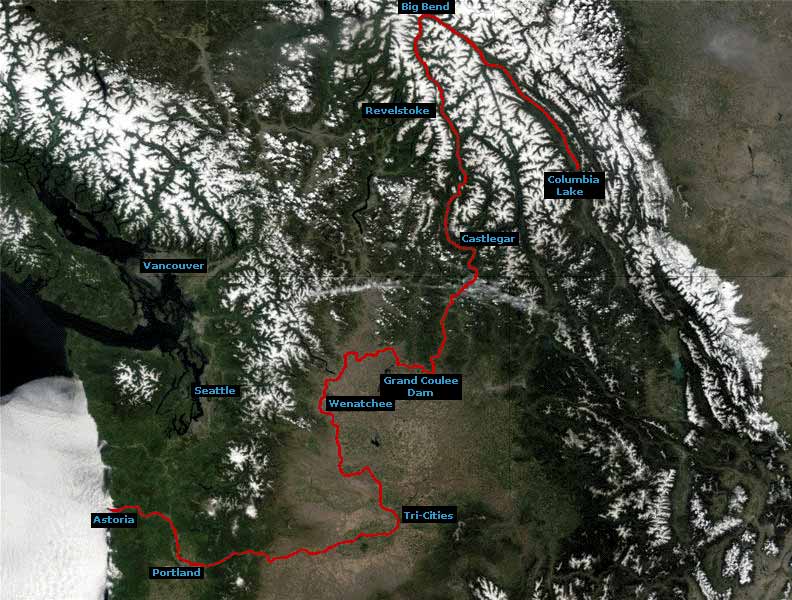 |
Salmon and the Columbia River:
Continuities and Challenges
 |
The course of the Columbia River (in red). It is the fourth longest river in North America, over 1,200 miles from its headwaters in the Columbia Lake (Canada) to its mouth at Astoria, Oregon.
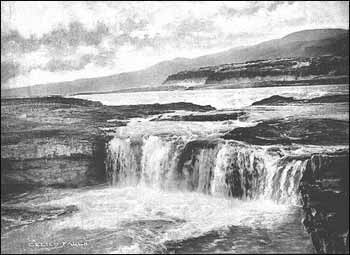 |
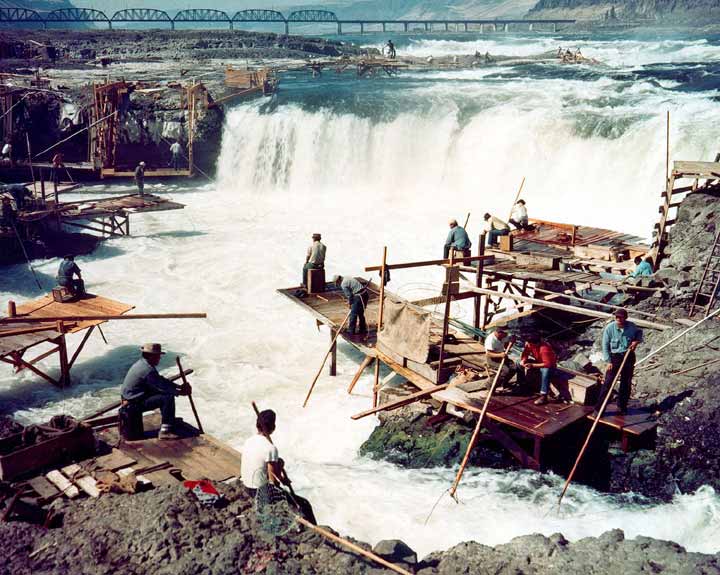 |
Celilo Falls - 1900s and 1950s
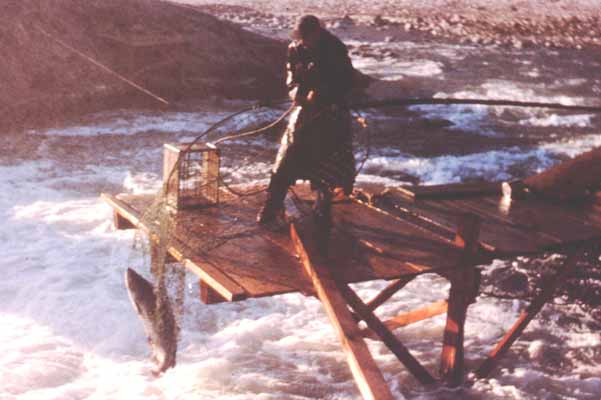 |
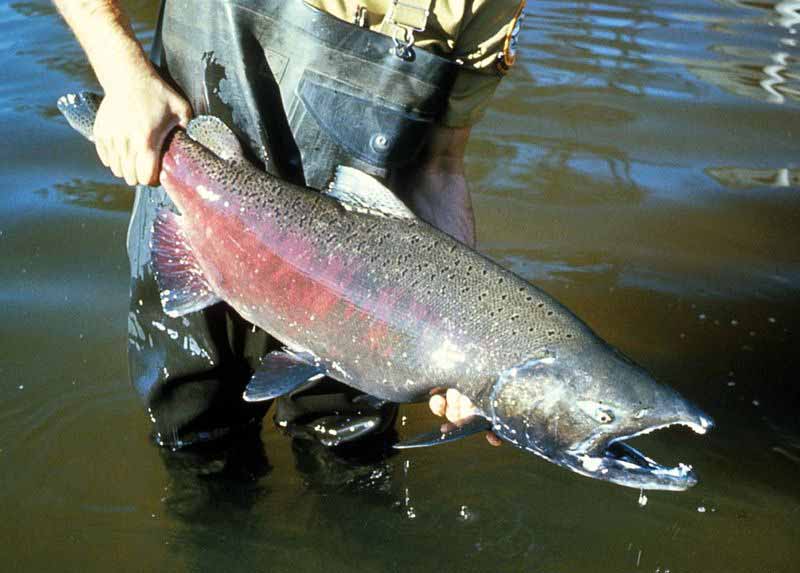 |
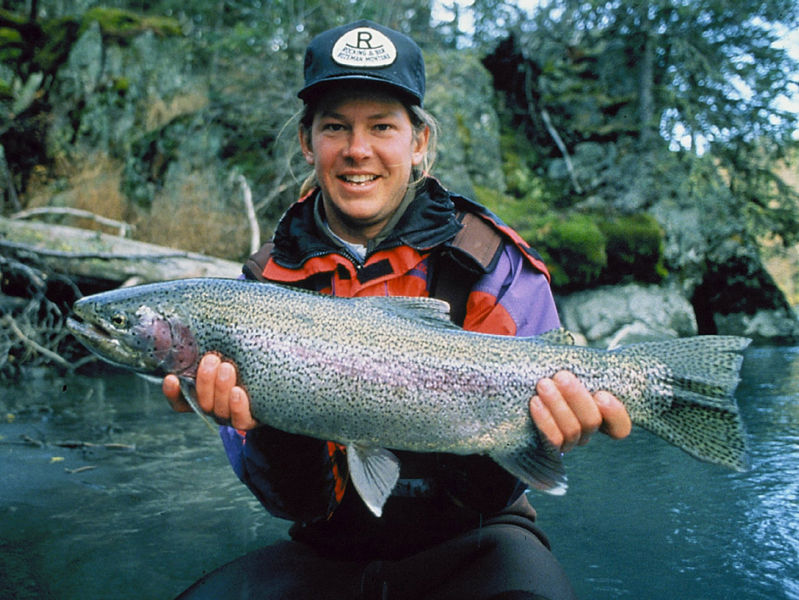 |
Chinook Salmon and Steelhead Trout. Before 1855, an estimated 14 million salmon and steelhead swam the river each year. For the "Big River" Tribes, the salmon is critical to the Indian way of life and their spiritual well-being.
Example of the Nez Perce Treaty of 1855,
similar to that of the other Columbia River Tribes:
Yakama, Warm Springs, Umatilla, Cayuse, and Walla Walla
Four Key Principles:
Treaties entered into between the United States Government and Indian Tribes acknowledge the Tribes as autonomous nations with inherent sovereign status.
Treaties guarantee the right to continue to fish (along hunt and gather) at "all usual and accustomed places . . . in common with citizens," regardless of where those places are on or off the reservation.
Treaties are not grants of rights to Tribes from the Federal Government, by rather grants of rights from the Tribes to the Federal Government. So that ownership of land and resources is to be held by the Tribe unless explicitly relinquished or ceded by the Tribe as specified in the language of a treaty - "reserved rights."
Treaties are to be interpreted as intended by the signers of the treaty - "cannons of construction."
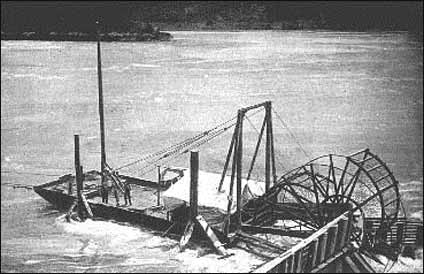 |
Fish Wheel along the Columbia River, 1880s. Along with canners to process the fish, by 1885 the fish wheels helped to harvest up to 45 million pounds of fish annually.
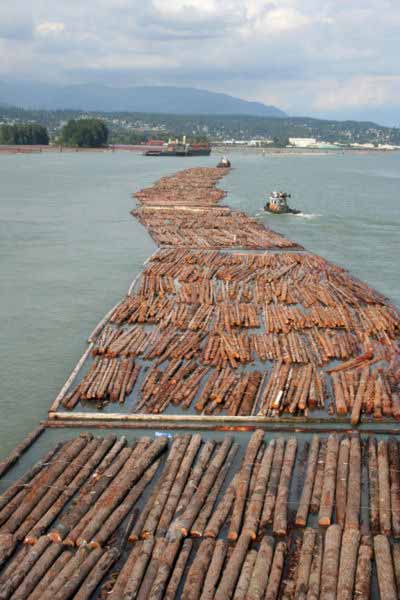 |
 |
Mining, Logging and Farming, and the resulting soil erosion. As anadromous fish, salmon and steelhead spawn and lay their eggs in swallow water gravel beds of fresh water rivers and streams. Upon hatching and with the river's current, the smolts travel down river to spend one to five years in the Pacific Ocean, and then return to the place of their spawning, to reproduce and die. The influx of soil from erosion onto spawning grounds of salmon is a significant factor in fish habitat degradation.
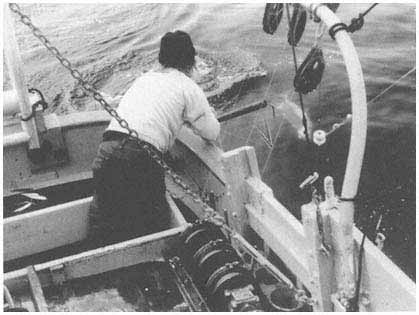 |
Ocean Fish Trollers. Trollers are another major cause to the decline of fish.
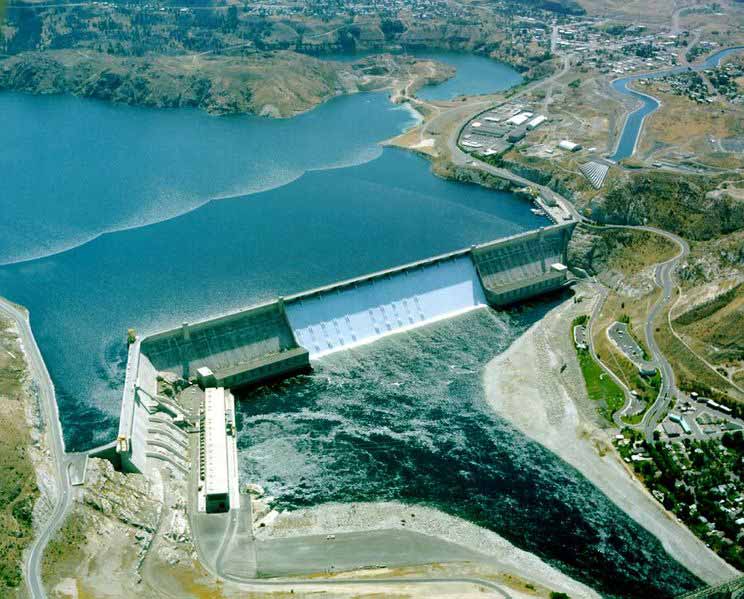 |
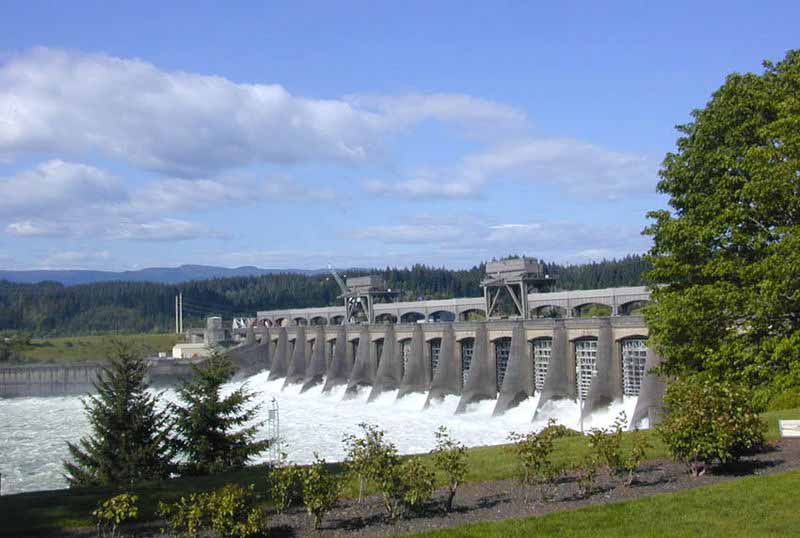 |
Grand Coulee Dam (completed in 1941) and the Bonneville Dam (completed in 1937). The dams were created to provide inexpensive hydroelectricity, irrigation water for dry-land farming, and, with locks at the dams, an inland navigable water route for commercial barging.
The Grand Coulee Dam blocked 1,200 miles of spawning grounds up river (Columbia and its tributaries), while the Bonneville Dam flooded the rich fisheries of the Long Narrows and Great Cascades, along with over 36 native villages and ceremonial sites. With the construction of the dams and railroad, also destroyed were ancestral graves and petroglyphs inscribed in the rock walls. The Federal Government did promise to relocate and rebuild these villages, but never did.
The Government eventually designated five small "in-lieu" sites, totally 40 acres, for Indian fishing use. Cooks Landing was one of those designated sites. Such sites, while off the reservation, retain federal and tribal reservation status, and are not subject to state jurisdiction.
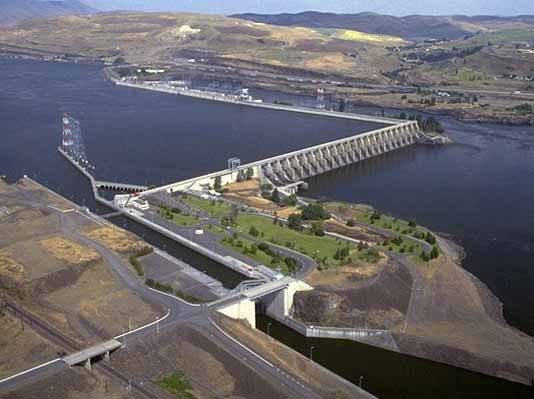 |
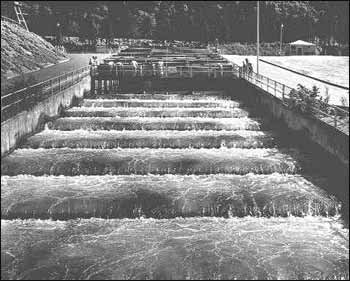 |
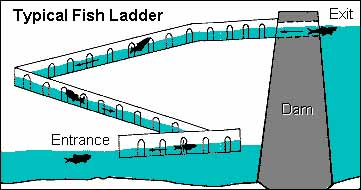 |
The Dalles Dam (completed in 1957) and the Bonneville Dam fish ladder. The Dalles Dam destroyed two of the greatest fishing sites on the Columbia, Celilo Falls and Five Mile Rapids. While the sites were destroyed, the right to continue fishing these waters was never relinquished by the tribes.
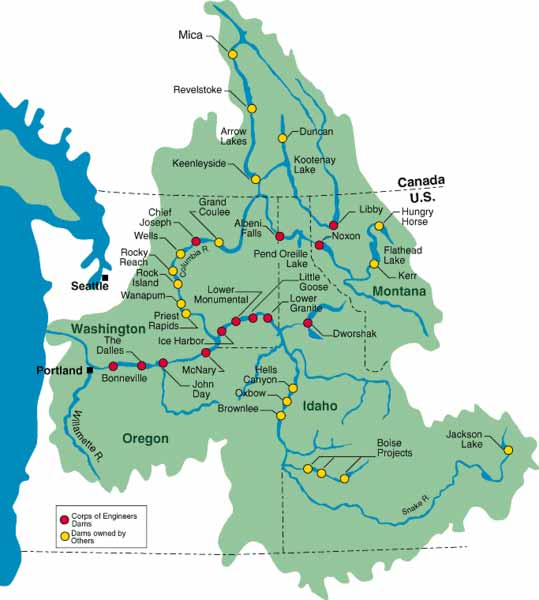 |
Dams along the Columbia River. Up to 20% of fish are killed tying to pass these dams. The water backed up behind the dams also slows the migration of fish to the ocean, rendering them more susceptible to diseases and predators. Today, with only some 2.5 million returning to enter the Columbia River each year, fewer than a dozen native salmon ever make their way back to Redfish Lake, at the head of the Salmon River, in central Idaho.
1905 -- U.S vs. Winans
Upheld rights of members of treaty tribes to cross non-Indian lands to fish at "usual and accustomed places." Also stated that treaties were to be interpreted as signers had intended, "cannons of construction," and reiterated the "reserved rights doctrine."
1938 -- Congress passed the Mitchell Act
It promised that fish lost because of dams on the Columbia would be replaced by hatchery fish. But all the new hatcheries constructed were built below the Bonneville Dam, thus assuring commercial fishing interests a good ocean harvest, while not improving upriver fish for the Tribes.
1942 -- Tulee vs. Washington
Because a treaty takes precedence over state law, members of treaty Tribes are not required to buy state fishing licenses or come under state fishing jurisdiction.
1968 -- SoHappy vs. Smith
Fourteen members of the Yakama Indian Nation filed suit against the Oregon Fish Commission seeking definition of their treaty rights on the Columbia and its tributaries, and of how and to what extent the state of Oregon may regulate Indian fishing. A similar suit was filed by the United States and the Yakama, Umatilla, Nez Perce and Warm Springs Tribes against Oregon (in U.S. vs. Oregon). These two cases were combined under the latter name and resulted in the following decision by Judge Belloni.
1969 -- U.S. vs. Oregon (Belloni Decision)
The court upheld that the state is limited in its power to regulate treaty Indian fisheries and may only regulate when "reasonable and necessary for the conservation of the fish resource." Furthermore, these regulations must be the least restrictive as possible and must be applied to non-Indians as well.
1974 -- U.S. vs. Washington (Bolt Decision)
Judge Bolt determined that the treaty language "in common with citizens" be interpreted to mean that the treaty Indian fishery and non-Indian fishery are each entitled to 50% of the harvested catch destined for "usual and accustomed places". Later that year, Judge Belloni applied this 50/50 principle to the entire of the Columbia River fishery. David SoHappy and other members of the treaty Tribes interpreted the "in common with citizens" to refer to mean the Indian was in common with other Indians at the time of the treaties - Nez Perce, with Umatilla, with Yakamas, for example.
1977 Columbia River Inter-Tribal Fish Commission
The Belloni and Bolt judgments encouraged the founding of CRITFC, with membership of the Nez Perce, Umatilla, Yakama and Warm Springs Tribes. With a budget of over $6 million, the Commission works on habitat restoration and protection, water quality, stock assessment research, fish passage, predator control, fishing access, enforcement of public education, among other initiatives. It plays a key role in the dams issue, and salmon and steelhead preservation.
1981 -- David SoHappy and "Salmon Scam"
David SoHappy (50 min. video. David SoHappy passed away in 1991, while his wife Myra passed away in 2005)
1994 -- "In-lieu-of sites"
The Nez Perce, Umatilla, Yakama and Warm Springs tribes' legal authority to fish on the Columbia River was established in the 1855 Treaty. In 1994, Title IV of Public Law 100-581 established "in-lieu-of sites" to replace historic fishing sites that were flooded upon construction of the Columbia River dams. CRITFC manages 31 fishing access sites available to members of the four tribes, including Cook's Landing, and some facilities offer shared-use with public access. See Map.
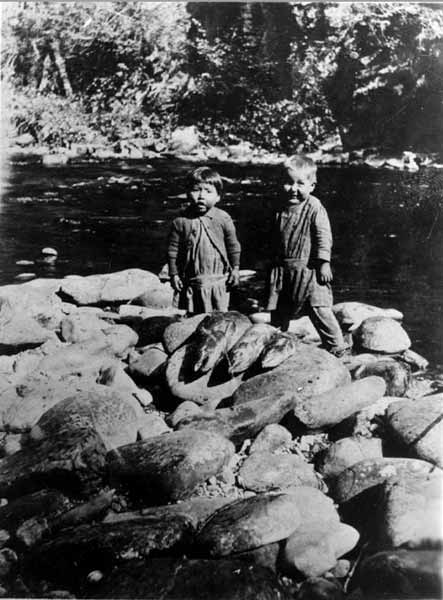 |
Salmon catch on the Clearwater River, early 1900s